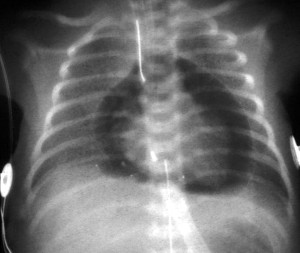Who gets a cardiac tamponade??
Good question. After doing quite a bit of research, it has become clear that the numbers of cardiac tamponade are poorly documented in the United States. I was unable to find a clear article that covered the distribution of cardiac tamponade. However, I found some information regarding those most at risk.
First of all, it seems that cardiac tamponade occurs in about 2 out of 10,000 cases. In younger ages, most cases of cardiac tamponade are caused by trauma or HIV, but in the elderly patients, it is more commonly associated with malignancy and/or renal failure. In the younger ages, there is generally more cases of boys than of girls with cardiac tamponade.
In one study I looked into, they researched the cause of 106 cases of pericardial effusion. They found that the most prominent causes were cancer (36%), idiopathic (30%), meaning there was no known cause, and infection (21%).
In another study, they examined the frequency of pericardial effusions in patients with HIV. The study found that of their 187 patients with pericardial effusions, approximately 14 of them were positive for HIV.
Another study concluded that there is a much higher incidence of pericardial effusion in patients with AIDS. Also, the development of effusion in patients with HIV suggests the transition to AIDS.
So while it is hard to determine the exact numbers of cardiac tamponade in the United States, we know that it is more prevalent in certain populations.
References:
Eisenberg, M., Gordon, A., & Schiller, N. (1992). HIV-associated pericardial effusions. Chest, 102(3), 956-958.
Richardson, L. (2014). Cardiac tamponade. JAAPA: Journal Of The American Academy Of Physician Assistants (Lippincott Williams & Wilkins), 27(11), 50-51. doi:10.1097/01.JAA.0000455653.42543.8a
